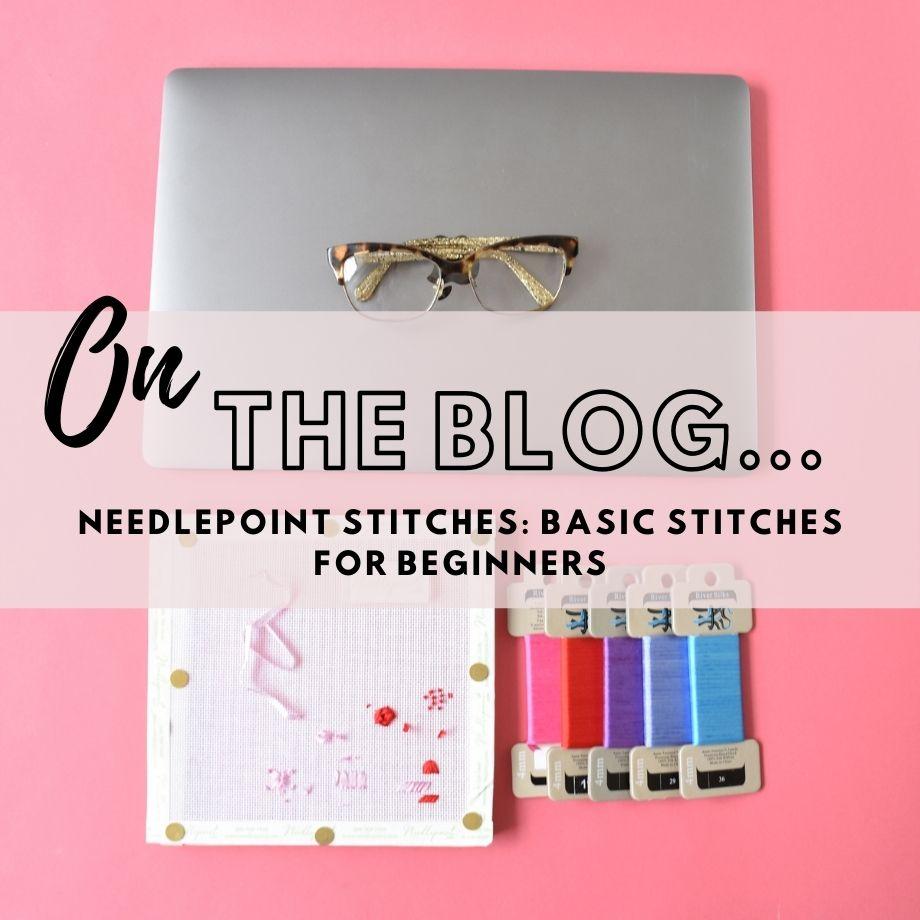Starting a new hobby means picking up new skills. When you pick up needlepoint, there are always new types of stitches to learn. The basic needlepoint stitches for beginners sound more complicated than they are, so once you learn them, they’re a breeze. After you master a few techniques, you can decide which stitches are your favorites.
Embracing needlepoint provides you with lifelong learning opportunities you’ll value forever. Whether you’re in it for the community or because you like to make things with your hands, you’ll have endless opportunities to practice your needlepoint skills once you learn a few simple stitches. Check them out:
Tent Stitch
The most basic type of needlepoint stitch is the tent stitch. You create a tent stitch by bringing the thread over the diagonal cross of your canvas. Lines of tent stitches look excellent when you use them to fill in a design. Rows of tent stitches lay flat and don’t offer many variations. Still, there are several different types of tent stitches, some of which provide more coverage, durability, and versatility than others.
Continental Stitch
For a similar design as the half-cross stitch with more thread on the back, use the continental stitch. This stitch type makes the canvas more durable and requires more thread. It’s still best for smaller areas, though. To create a continental stitch, stitch consecutive tent stitches next to one another, effectively wrapping the thread around the canvas. This stitching style creates a strong hold for your pattern.
Basketweave Stitch
Considered the sturdiest stitch style, the basketweave stitch uses the most amount of thread. Though it looks like the continental stitch from the front, the technique and the pattern it produces on the back of the canvas are different. This style offers the most coverage without distorting the image, so it’s the best one to use when filling in a large area. You can only do basketweave stitch in a diagonal.
Gobelin Stitch
To create some texture on your canvas, you might use a Gobelin stitch. It is a straight stitch that you can work in different layers and angles to create various effects. With this technique, you’ll bring the needle through the last hole of the previous row. It’s a common stitch to use for landscaping and storytelling.
Mosaic Stitch
Another fun stitch style that’s easy for beginners is the mosaic stitch. This technique consists of three stitches and is easy to master once you’ve learned a tent stitch. To create a mosaic stitch, create two half-cross stitches that cover one canvas intersection with a longer cross stitch in between.
How To Start a Stitch
To start your stitch:
- Cut a piece of thread 18 inches long. (Or, if you don’t need to be exact, measure the thread from your elbow to your finger.)
- Thread your needle.
- Tie a knot at the opposite end of the thread from the needle. The knot should be big enough that it won’t fall through the canvas. This is called a “waste knot.”
- Place the waste knot on top of the canvas by pulling the thread down into the canvas from the top.
Where To Start Stitching
About an inch from the “waste knot,” begin stitching your design. You’ll stitch over the “tail” of the knot before cutting it away. It’s the only knot you’ll tie to start a thread for your piece. Subsequent threads will lock into your canvas from the existing fabric.
How to End a Stitch
Once you run out of thread or need to switch, you’ll need to end your stitch so that it doesn’t come undone. To end a stitch, flip the canvas over to look at the back. Run the needle through the most recent threads you stitched to tie up the end. Make sure it’s secure, and carefully cut the needle loose.
Things To Know Before You Begin
When you’re starting with your first needlepoint project, it helps to have a few tips and tricks up your sleeve. Many people make beginner mistakes that you can avoid. First, start small; stitch the smallest areas of color first. When you get to larger areas, you can use the basketweave stitch. You can also carry thread that’s the same color to other areas of the canvas if you’re moving less than half an inch.
For a successful project, secure the edges of your canvas so that it doesn’t warp. Further, make sure you have enough thread. You might consult with a store to determine how much you need or buy a kit. Kits come with everything you need, including thread, needles, the canvas, and the design. Still, even if you’re using a needlepoint brick doorstop kit, make sure you’re following the design to ensure you have enough thread to complete it.
Your canvases won’t look amateur once you have the basic supplies and master basic needlepoint stitches for beginners. It takes more than the tent stitch to be a needlepoint legend. Try using needlepoint kits and taking lessons from experts to develop your style and craft. The more you practice what you’re passionate about, the better you’ll become.


